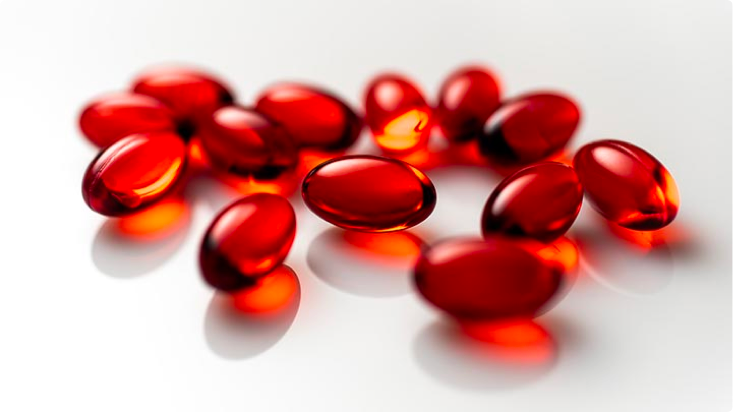Break Through the OTC Noise
Category | Small molecule
It’s no secret—consumers have a vast range of OTC options at their favorite in-store or online retailer. Everything from tablets and capsules, to syrups—consumers have more options than ever in the OTC jungle. When it comes to breaking through the OTC noise—or standing out on the shelves—of the highly competitive industry and sustaining your brand, it’s key to make sure more of your branding is visible throughout the physical and virtual aisles.

One dose form comes to the forefront as the best strategy for you to differentiate your brand at the retail store-level: softgels. By 2023, the global softgel market is expected to be worth approximately $3.2 billion due to its consumer preference. This market trend should have OTC brands pushing strongly to expand their drug portfolio to include various softgel offerings. Softgels benefit both the company and consumer alike because they are used by a wide demographic of consumers, get more options in various aisles at the store-level, are generally more appealing to consumers at-large, and are more scalable/cost-effective than you might think.
At the bedrock of standing out on physical and virtual shelves, is providing a product that accommodates consumer preferences. This strategy can make or break your brand’s reputation and is key for differentiating yourself from the competition. It’s crucial that we listen to what the consumer wants—do they really want the bitter-tasting cough syrups they grew up being spoon-fed? Consuming an OTC medicine doesn’t have to be miserable, and softgels are proving themselves to be popular with more than just a couple niche demographics. Softgels first gained popularity among consumers in the nutritional market—softgels are the most popular form of supplements. As the entire softgel industry—both the nutritional and pharmaceutical markets—continues to rise in consumer preference, it is estimated that the market will “grow with a CAGR of 4.7 percent from 2020 to 2027.”
Elderly Consumers
At the forefront of consumer advocacy for softgels is the geriatric demographic. As you get older, it becomes more difficult to swallow large, rigid medications. It’s already hard enough for some elderly consumers to swallow hard or solid foods due to the loss of muscle strength in the throat—IE, dysphagia.
When considering the entire elderly population, it is expected that one in five US residents will be over the age of 65 years old by 2030. To put this into perspective, if by 2030 the total US population stays approximately the same as it is now—331 million people—20 percent of the US population will be elderly. That means over 66 million people could have the potential of developing dysphagia.
Elderly consumers shouldn’t have to suffer through taking hard-to-swallow medicines just because they have a cold. They should have a convenient and still effective option—that option is softgels. Softgels are easier to swallow due to the flexibility and shape of their outer casing—making it the ideal OTC option for geriatric consumers.
Parents
Anyone who has children knows how difficult it can be to get their child to take medicine. The OTC industry is dominated by kid-dreaded, bitter-tasting syrups, and it’s almost impossible to get a child to swallow a pill.
Industry leaders are adding chewable softgel options to their drug portfolio. A chewable softgel can come in various shapes and can be made to taste good, making them ideal for children—or anyone who has trouble swallowing medicines. They also eliminate the need to use water for administration and can be made to eliminate unpleasant odors.
The DIY Generation and OTC
Millennials—also known as the DIY generation—are always looking to solve problems themselves, rather than consulting a professional. In fact, 45 percent of millennials already prefer to use OTC medicines over going to the doctor. The chances of the millennial consumer researching the best OTC medicine when they’re sick are high. In this population, trust is critical. Yet, once persuaded of the benefits of your innovative softgel product, millennials often show high levels of brand loyalty. A recent study suggests that millennials are the most brand-loyal generation. If you take the US’s population for example, millennials are the largest demographic—making them the largest consumer demographic as well. Millennials are quite literally the future and the following Gen Z’ers share many of their brand expectations.
So, how do you win the brand loyalty of millennials? According to a recent study, there are six major factors of gaining the trust of this brand-loyal generation:
1. Heritage
Brand heritage is very important to millennials and they are weary to trust a newcomer. If you are a newcomer however, it is crucial to establish a relationship with them. Tell a strong, grounded, story of who are you as a brand, and how you share the same values.
2. Health benefits
Both millennials and Gen Z’ers are a lot smarter and well-educated than we give them credit for, and both demographics value health benefits. Claiming something is “good” for them isn’t enough—you need strong, supporting evidence as to why your product will benefit their health.
3. Efficacy claims
Like the point above, you must back up your claims. If you claim your softgel technology will have faster onset of relief, you better be able to back it up. Millennials will research outside your own marketing to ensure your efficacy claims are accurate and true.
4. Transparency
Don’t ever lie to a millennial—they’ll uncover any misinformation quicker than you can get your product on the shelves. Honesty is key and never withhold information—if you make a false claim, you’ll be dead in the water with millennials.
5. Aesthetics
Once you’ve proved your product’s efficacy, you must ensure the packaging and product is aesthetically pleasing. An OTC softgel is already much more visually appealing than standard OTC drugs, but even your packaging must communicate quality and professionalism.
6. Social support
If a millennial can’t communicate with a brand, the brand isn’t worth their trust. Social support—IE, communication via social media—is key to a brand’s trustworthiness to millennials. Be sure to have the capacity to interact with millennial consumers about their questions or concerns about your product.
It may seem challenging to appeal to the millennial consumer demographic, but the journey is worthwhile. Once a millennial trusts your brand, the chances are, you’ll have a customer for life.
When it comes down it, OTC softgels are just more appealing to consumers—and it’s not by accident. Afterall, who likes bitter syrups and large rigid tablets? OTC softgels are more popular because:
They’re easier to swallow—or chew
It comes down to ease of use. Having to take an OTC medicine is already a less than desirable task and softgels’ easy-to-swallow—or chew—characteristics aren’t just appealing to geriatric and pediatric consumers. Any consumer would prefer an OTC medicine that wasn’t a dreadful experience and softgels are truly more enjoyable.They provide faster onset of relief
The liquid properties of an OTC softgel are absorbed in the body quicker than standard OTC drugs. This means the consumer will get relief much quicker—adding to softgels’ convenience and consumer preference.They have better sizes and can be made to taste good
Take yourself back to a time where you’ve had to shallow a large pill that didn’t taste good—it probably wasn’t a great experience. Softgels can eliminate this type of unpleasantry in two ways. The first is the fact that softgels are made with a flexible outer shell—making them easier to swallow. The other way is making softgels into chewable forms that taste good. Either option makes consumption a less daunting task for the consumer.They have more aesthetically pleasing colors and appearance
Not only do softgels’ size and shape help make consumption easier, but their bright colors are generally more appealing to consumers, as well.
As we’ve previously stated, the key to getting your brand more recognition at the store-level is getting more of your branding, in more OTC categories. From the cough/cold category, to the pain relief, allergy, and anti-diarrheal categories—softgels can be manufactured into a myriad of different OTC drug offerings.
But it doesn’t stop at getting more of your product in more categories, either. It’s about communicating to consumers that your brand is capable and can be a customer’s one-stop-shop for all their OTC needs. This heightens your value to the consumer. You’re adapting to their preferences and providing them with a sense of reliability because you’re able to address any ailments that call for an OTC medicine.
A major roadblock to your softgel plans may be getting buy-in from internal decision-makers and stakeholders. One of the reasons why adding softgels to a company’s drug portfolio is typically nixed, is the misconception that they are more expensive to manufacture. The reality, however, sings a different tune. The cost of goods required to manufacture softgels is the same and in some cases, lower than the cost of manufacturing more traditional oral solid dose OTC medicines. Furthermore, softgels are a smaller investment when it comes to equipment as well. With softgels, as the commercial batch is made on the same equipment as the development batches, there’s no need to scale the equipment—no matter the batch size. Without communicating this understanding, obtaining buy-in from your internal decision-makers and stakeholders is likely going to be difficult. Be sure to provide examples like these and better your chances of getting your softgel strategy off the ground, and up and running.
Softgels: The Secret Sauce to Standing Out on the Shelves
It cannot be stressed enough, the competition in the OTC space is fierce, making product differentiation and a diverse product portfolio more important than ever. To stand out, finding innovative dosage forms—such as softgels—that accommodate consumer preferences is critical. As softgels continue to rise in consumer popularity due to their speed of onset, ease of consumption, better size varietals, improved taste, convenience, customizable appearance for your brand, and a price consumers are willing to pay, it would be detrimental to your brand not to embrace softgels as a viable innovation.
Adding softgels to your company’s drug portfolio is a sure-fire way to get your brand to stand out on both physical and virtual shelves and grow your market share—ultimately giving you more brand sustainability. The clock is ticking though—the time is now to get your own branded softgels onto the shelves at the store-level. Because if you don’t, your competitors likely will.
Thermo Fisher Scientific is Your Customer-centric, Softgel Innovator. Learn more about softgel technology and how we can help you unlock your brand’s full potential.


